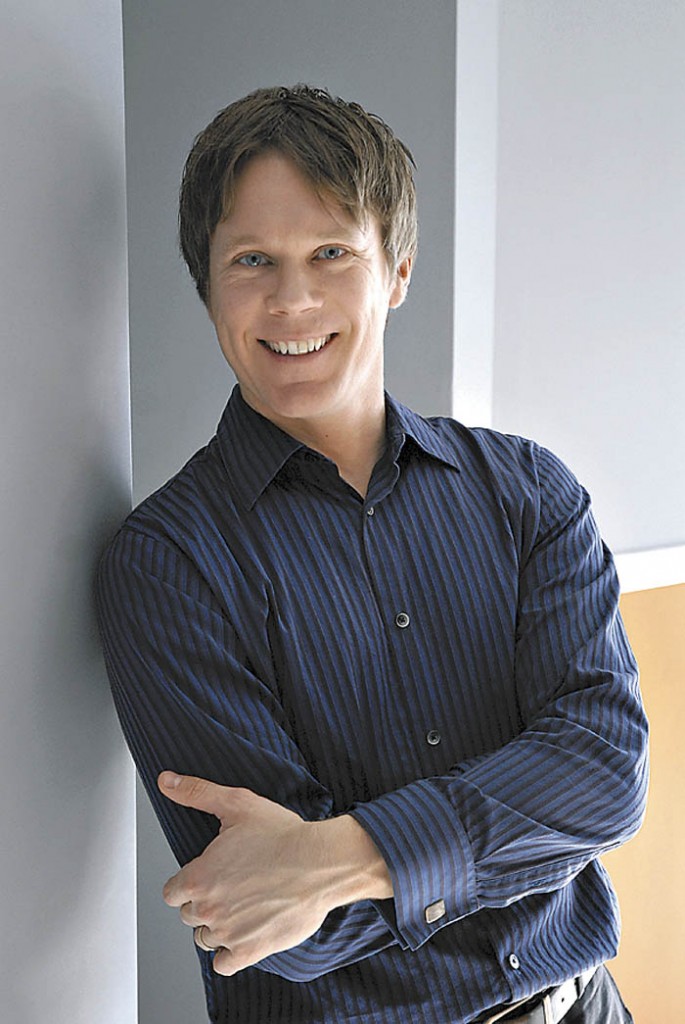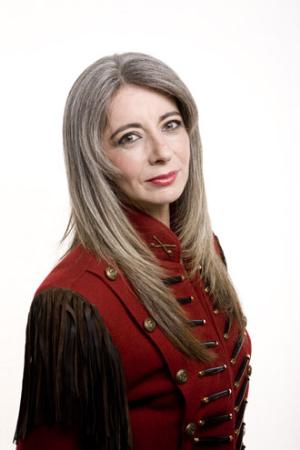Winnipeg Symphony brings surprising and spectacular music from the North
At seventy-four members—exactly divided between men and women—the Winnipeg Symphony Orchestra is easily the smallest group to appear in this year’s fourth, and final, Spring for Music festival. A community ensemble, they brought the most spirited fans with them to Carnegie Hall Thursday night—their fellow Canucks gave them a standing ovation when they stepped onstage, and applauded warmly in between symphony movements.
Their size means that there is a limit to the volume of sound they can produce. But under music director Alexander Mickelthwate, they play with excellent intonation and such a fine overall blend and balance of sound that, on their own terms, they may be the best orchestra to appear in the week’s worth of concerts.
For a series that encourages the ensembles to show off both their chops and their taste, they also brought arguably the most ambitious program—certainly the most unusual—to the hall. The music was not just contemporary but truly new: R. Murray Schafer’s Symphony No. 1 from 2010; Derek Charke’s 13 Inuit Song Games, with the charismatic throat singer Tanya Tagaq; and Vincent Ho’s The Shaman: Concerto for Percussion and Orchestra, written for and performed by Dame Evelyn Glennie. All the works were New York premieres.
Any chance to hear Schafer’s music is welcome. The composer is best know for his book The Soundscape: Our Sonic Environment and the Tuning of the World, a mind-altering exploration of how we have hear, or ignore, our audible landscape.
His Symphony No. 1 is stupefyingly eccentric. Written in a tonal style that mixes Neo-romanticism and the modernism of Weill and Hindemith with cinematic effects and clichés, it starts as a fascinating puzzle and eventually wins over the listener through sheer personality and accumulation of details.
This is almost musical aphasia. Awkward, rudimentary phrases and gestures are quickly followed by gorgeous, sublime ones. The flow of the first movement, marked “Very vigorously,” has the logic of a dream, with ideas and memories cohering and vanishing. The second movement, “Mysteriously,” begins with rising string glissandos that are beaten back by the bass drum. Then comes the truly mysterious sound of alternating wind chorales and a three-note tune whistled by half of the orchestra members.
In the final movement, “Fast and furious,” tumbling, quasi-cartoon music is juxtaposed with phrases that are alternately naïve and sentimental. Schafer’s structural means are memory and recall. Somehow it all works, especially with such assured playing from the orchestra, who clearly grasped its internal logic. Considering how fine the playing was, especially the expressively colorful woodwind section, perhaps his symphony is really a concerto for orchestra in disguise.
Charke’s piece is for string orchestra, with Tagaq singing, and is an adaptation of his Tundra Songs, made for Tagaq and the Kronos Quartet in 2007-08. The concept is based on a traditional vocal gamed played between two singers who pass melody, sound and rhythm back and forth until one can’t continue. Charke freely adapts the idea and traditional themes.
The original composition is exciting, frenetically driving, intimate music. But with dozens of players instead of four, the attacks and articulations are dampened by the larger sound and texture, and despite the orchestra’s energetic playing, they could not project enough rhythmic sharpness and articulation. Tagaq sang with a microphone, but the subtlety of her vocalizations were buried and the mix between her voice and the orchestra was off; they sounded like they were playing in separate worlds.
Ho is the Winnipeg Symphony’s composer in residence, and his concerto, from 2013, is swaggering, satisfying and often spectacular. The Shaman opens with a deeply ritualistic “Ritual” movement, with Glennie sliding between three different percussion stations and playing her way through the bulk of her kit for the piece: bells, chimes, bass drum, toms, marimba, vibraphone and trombone mute played with a bow (producing a shiny, scraping effect).
Together, orchestra and soloist produced a dramatically robust sound. Ho uses percussionists in the orchestra to set the context for Glennie, and he uses the low brass to push the music forward—especially in the concluding “Fire Dance”—and that has an exciting immediacy. There is a gorgeous dialogue between vibes and piano in the “Fantasia-Nostalgia” movement. He also gives Glennie a lot of room to improvise, and her soloing on the tuned percussion and the drums was terrific: she balanced imagination, order and the basic pleasures of rhythm. The aggressive, joyous physicality of the music and the playing was like a rumble between the musicians, a street-fight for young bodies relishing their lithe power.
It was musically appropriate, then, that the Winnipeg Symphony Orchestra’s encore was the “Times Square” ballet from Leonard Bernstein’s On the Town, delivered in a confident, jaunty manner that made them sound almost like a New York hometown band.
Spring for Music continues through May 10; the Cincinnati Symphony Orchestra performs tonight at 7 p.m. springformusic.com


Posted May 10, 2014 at 7:00 pm by Judy
While Mr. Grellla’s review of the Winnipeg Symphony Orchestra’s performance at Carnegie Hall was lovely, perhaps he might like to know that WSO is a PROFESSIONAL orchestra (we do have them up here in Canada, you know…..), not a “community ensemble”, which to my mind infers a group of amateur players getting together!!